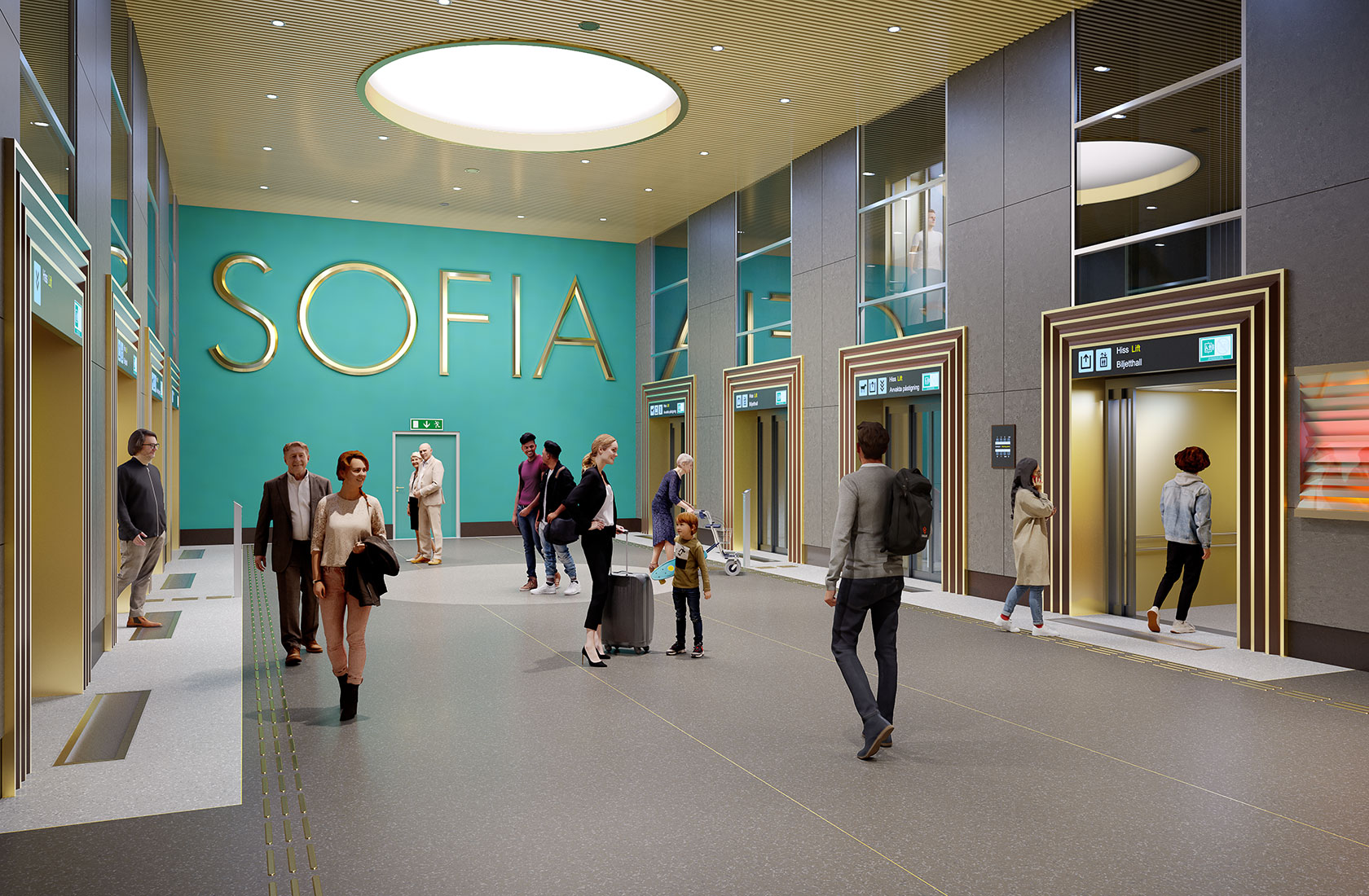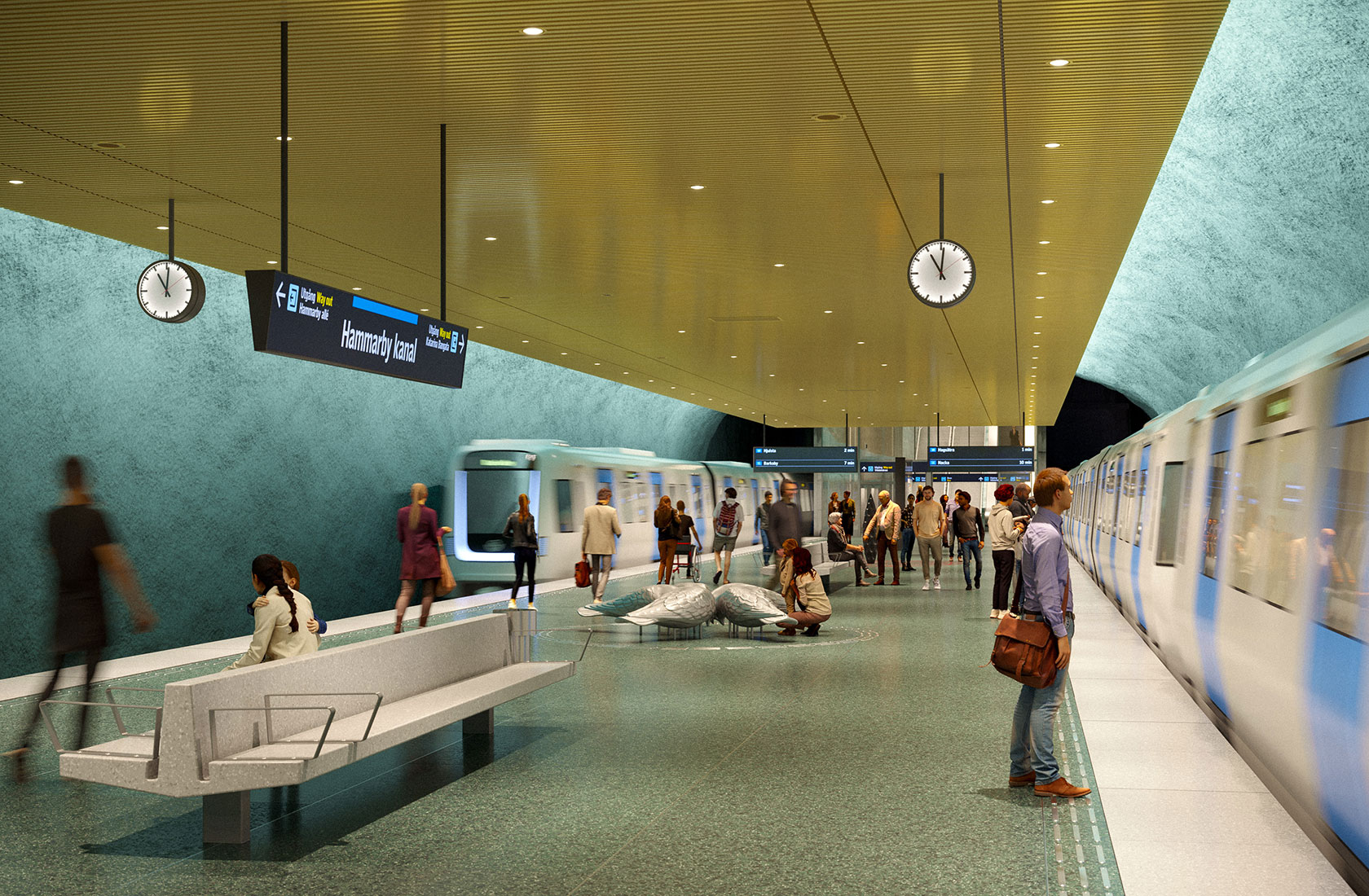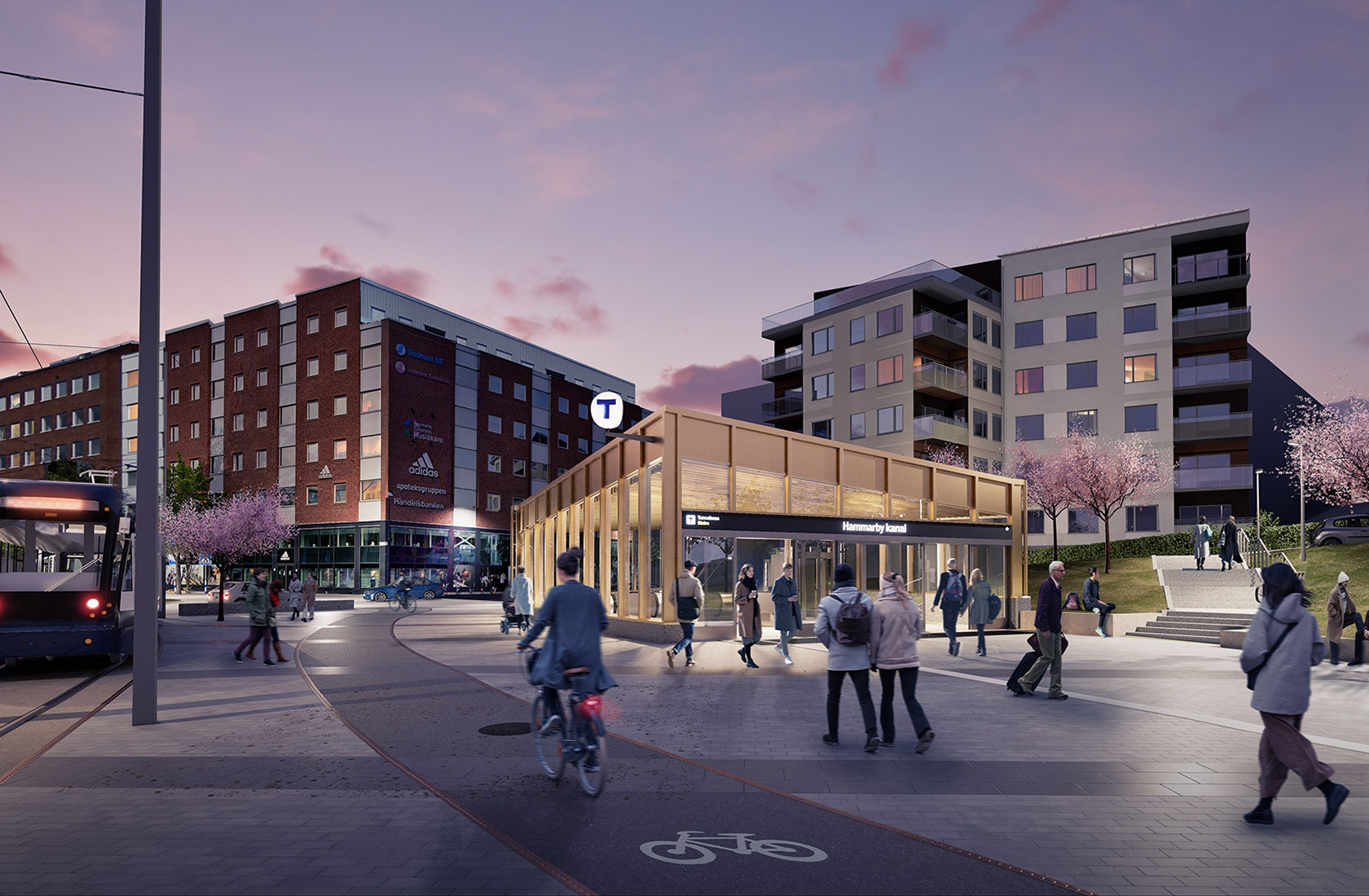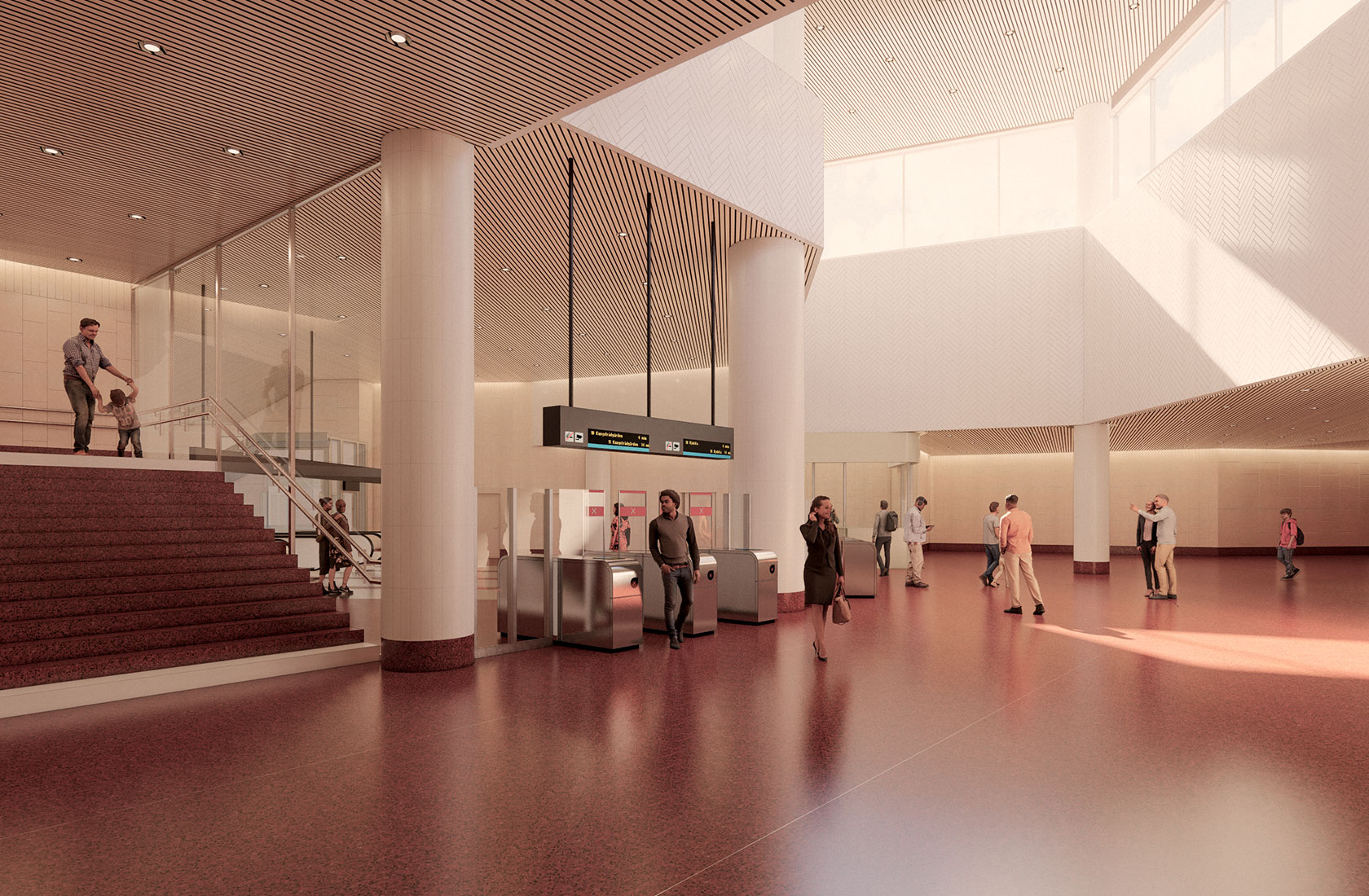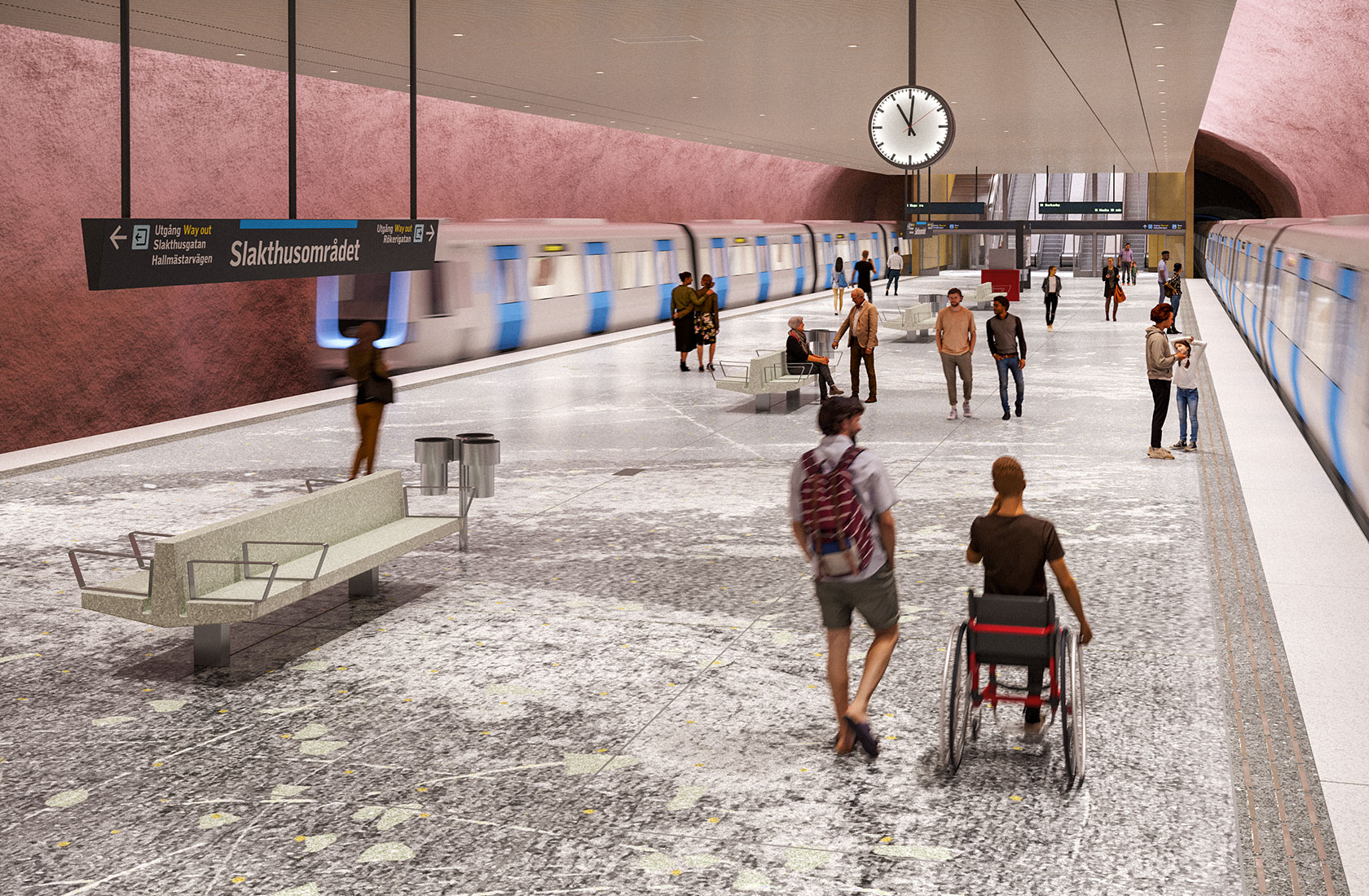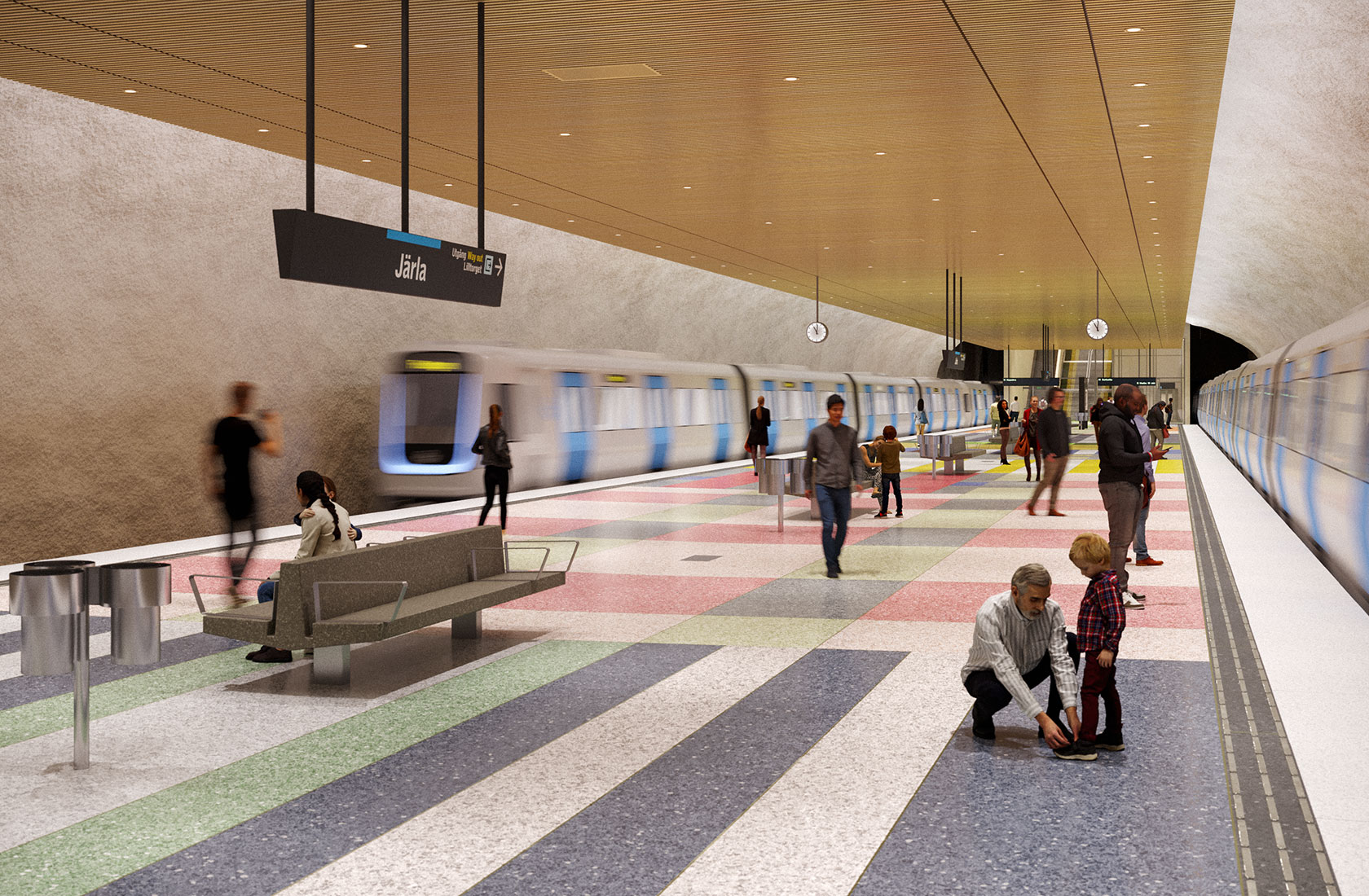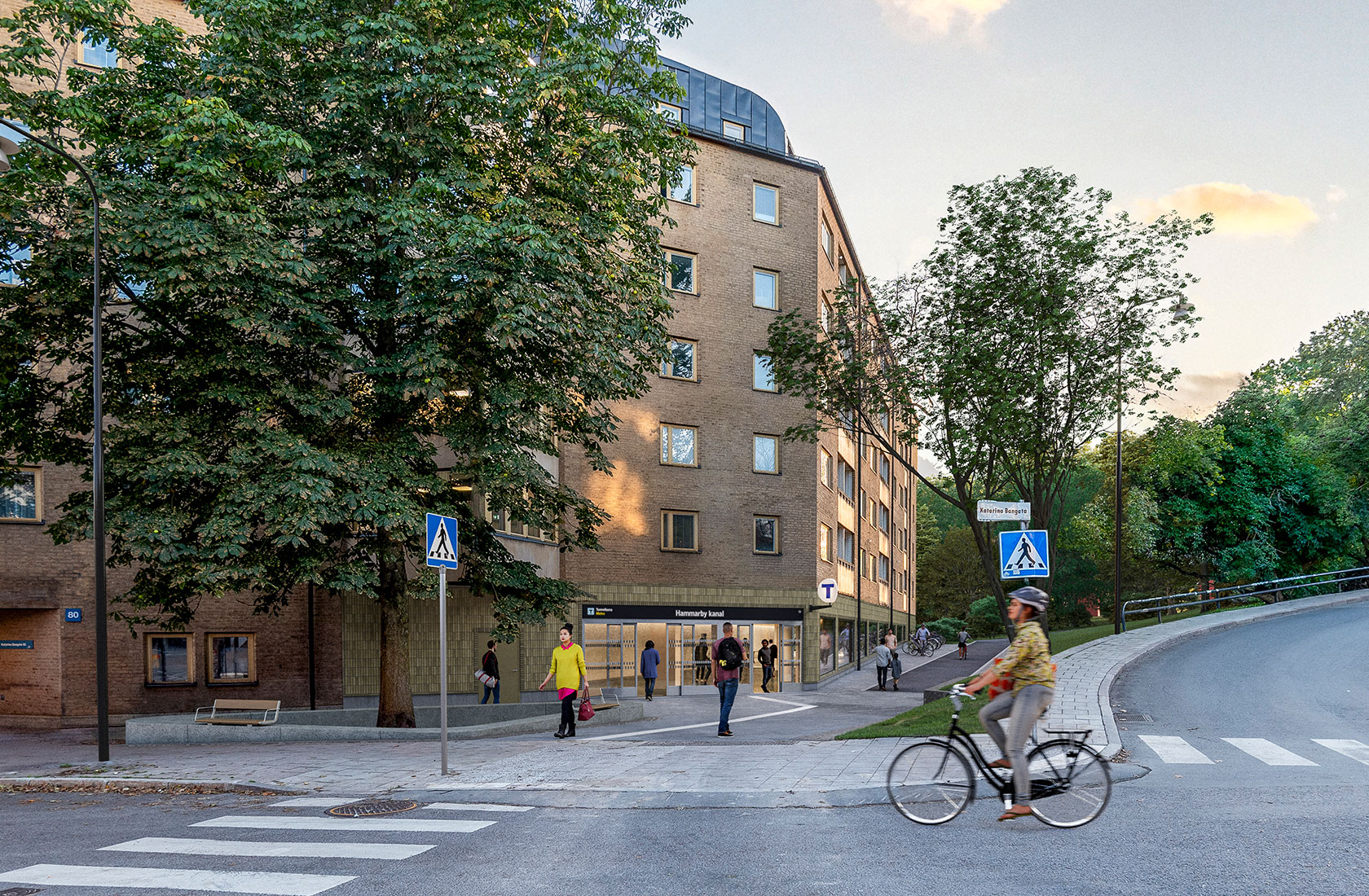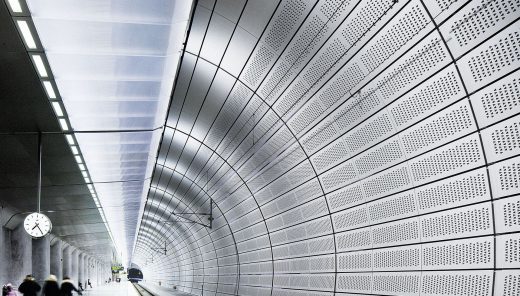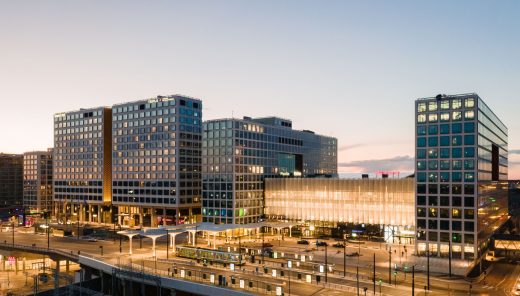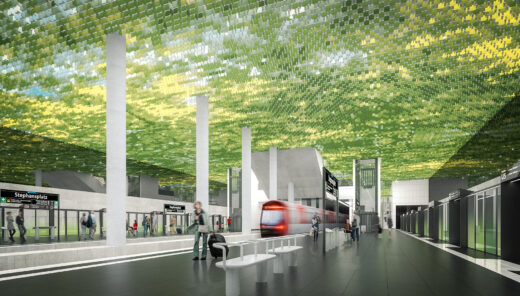Design of metro stations in Stockholm
Stockholm metro
By 2030 Nacka, just outside Stockholm, will be connected to the capital’s main station T-Centralen via 11 kilometres of new tunnels and tracks – part of the largest investment in Stockholm’s metro in modern times. When designing the seven new stations, the aim is to create sustainable, attractive, and safe environments for passengers.
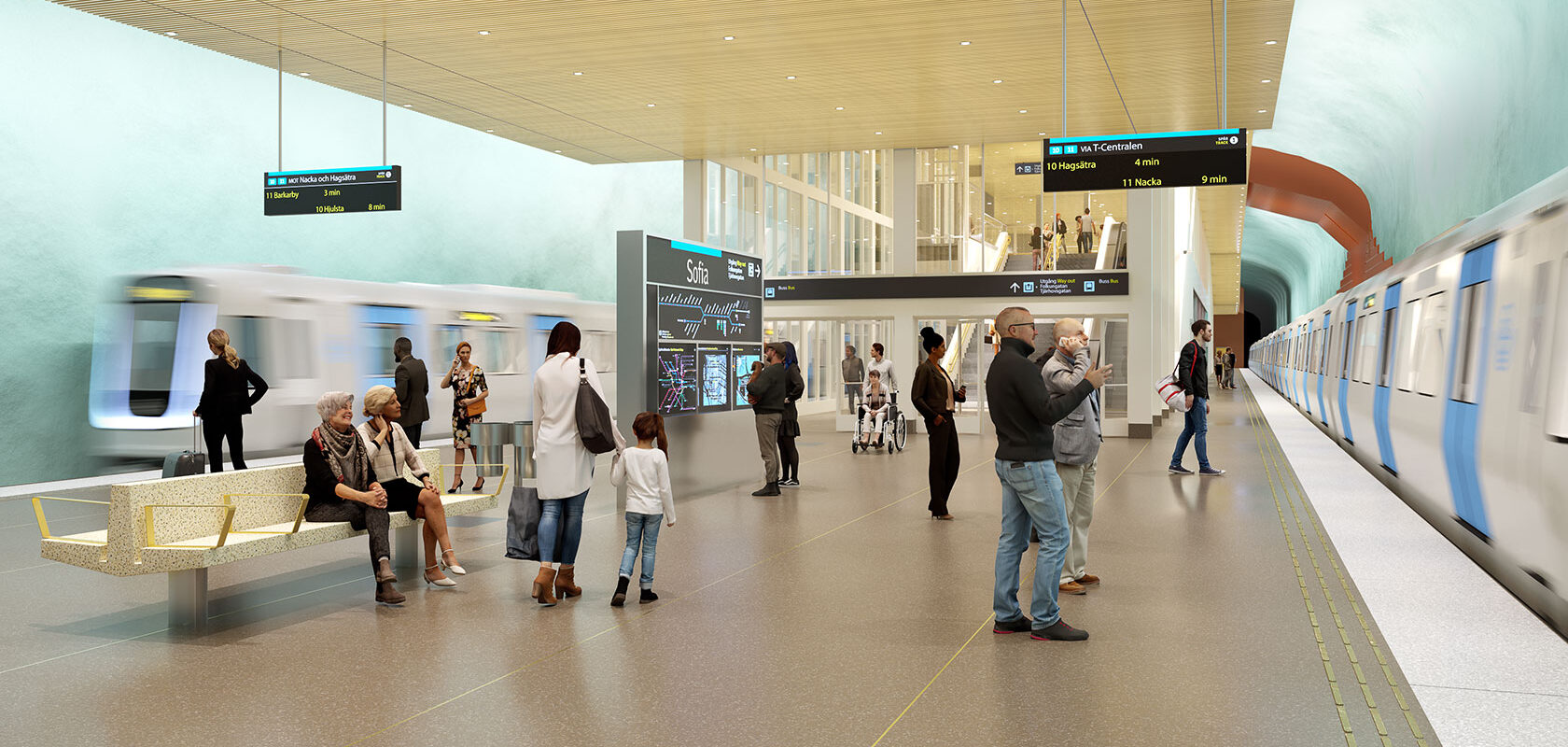
Facts about the project
Client
Stockholm city council
Place
Stockholm, Sweden
Visualisations
Sweco
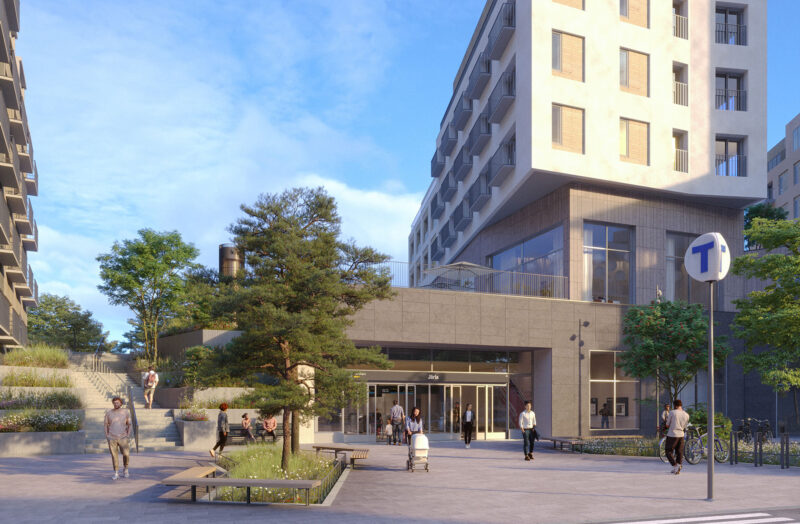
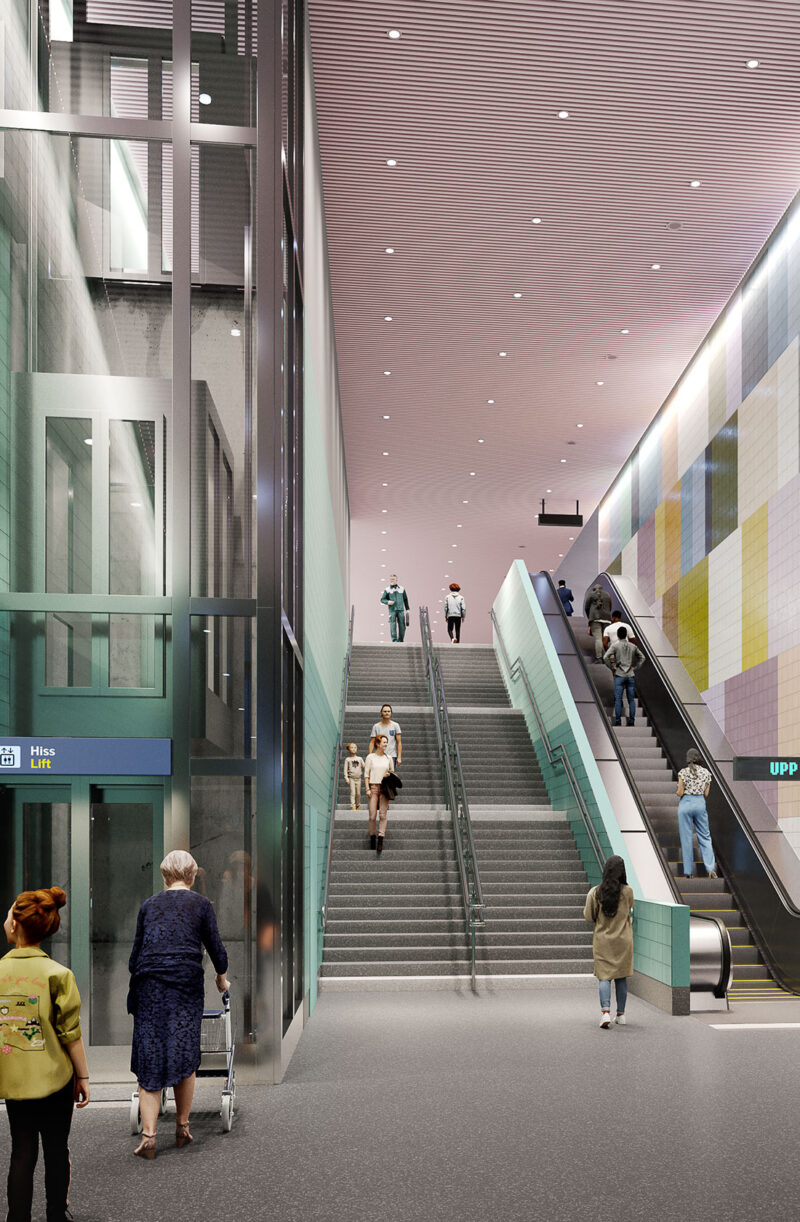
Designing sustainable and attractive stations
Stockholm’s metro network is undergoing a significant transformation and expansion that will greatly improve the region’s public transport system. Sweco’s architects have been working on the extension from a busy station in the city centre towards the southern suburbs over the past eight years, focusing on designing seven entirely new sustainable and attractive stations.
The goal has been to create a passenger environment that is safe and welcoming for all. Great emphasis has been placed on designing stations where visitors can easily orientate themselves. This also applies to ground level, where the stations should be visible and easily accessible for transfers to and from other public transport. The stations should also leave an architectural imprint of our time and remain appealing even in fifty years.
Each station will have its own identity
A key aspect of the design is that the contrast in the space between the platform and the surrounding rock should be clear. All stations share common design solutions, with floors made of cement mosaic, walls covered with ceramic tiles, and ceilings made up of steel slats. In addition, all stations share a common lighting concept, but each station will have its own identity through varied colour schemes in the spatial divisions.
The station Sofia, a much-anticipated addition to the metro network, presents a particular challenge as it is located 100 metres underground. Passengers reach the platform via lifts from an entrance situated in the middle of a park, and considerable effort has been made to ensure the journey down is as safe as possible. In collaboration with artists, an artwork has been created in the lower lift hall, which gives the illusion of daylight reaching the station. Large spaces have been designed to counteract feelings of confinement.
Art that interacts with the overall design
The new stations will also contribute to the tradition that Stockholm’s metro system has, as the world’s longest art exhibition. In station environments, recognisability is important, but each station will also have an individual character to aid orientation within the metro system. Together with the artist appointed to each station, a comprehensive design has been developed, where the art interacts with the overall design.
Complex project requires close collaboration between many disciplines
Designing underground stations is a complex process that requires collaboration across various technical fields to drive the project forward. Architects play a central role in bringing together the overall vision and enabling the artists’ aspirations. The tradition of celebrating art in Stockholm’s metro system continues to evolve and be nurtured.
Sweco, in collaboration with TYPSA, has been commissioned to design the new underground section to Nacka and Söderort. This is a large and complex project that requires expertise across numerous disciplines related to rock engineering, civil engineering, architecture, railway engineering, environmental issues, and planning approvals.
Read more about Sweco’s offer within transport architecture.
